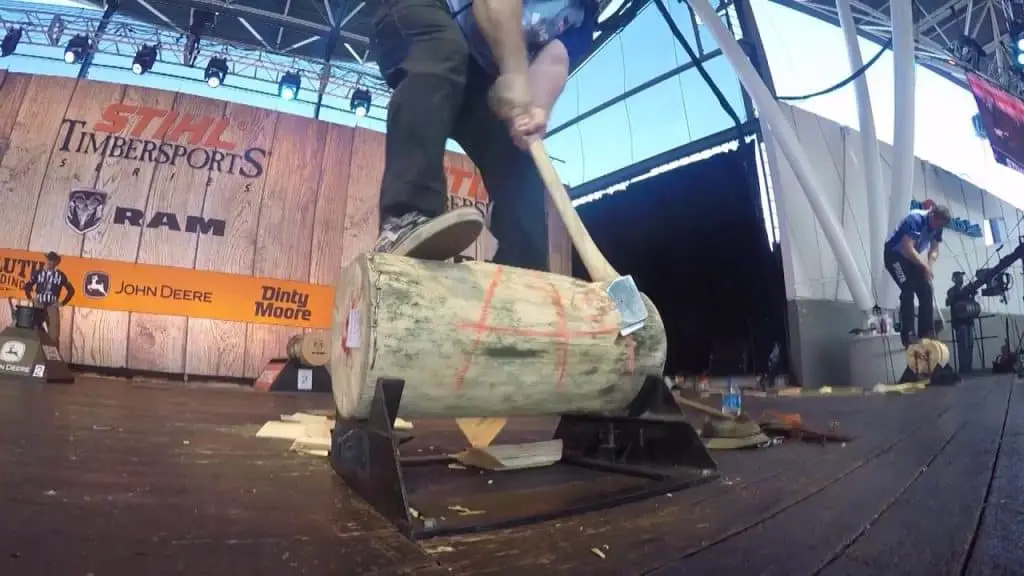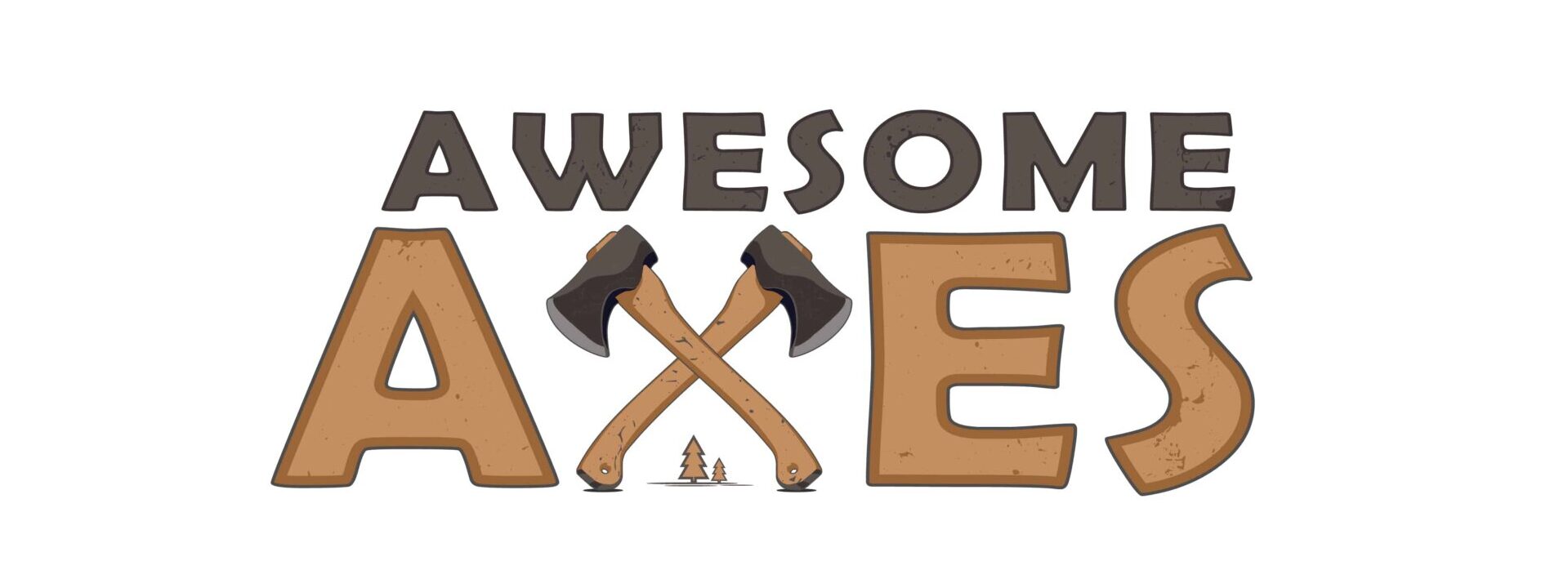Underhand Chop is a competitive lumberjack event where participants stand on a horizontally positioned log and chop through it using an axe. They alternate between the log’s sides, cutting V-shaped notches. This event requires balance, precision, and power, showcasing the competitor’s skill and speed.
One of the most exciting disciplines in Timbersports is the Underhand Chop. This thrilling event, which can be complete in under 20 seconds, puts athletes competing against each other to halve a wooden block with an axe.
The Underhand Chop is a Timbersport even where the competitor stands on top of a wooden block and chops it in half with an axe.
Table of Contents
Underhand Chop Overview
This discipline or event mimics the real world technique of chopping up an already felled tree into lengths before chainsaws were invented. This is commonly the first discipline that a beginner axeman will learn. It requires power and accuracy.
This is the process that is followed:
- The first blows are called ‘drives’.
- The next blows are called ‘chips’. This cuts the remaining fibres and removes the chips from the block, which opens up more access to drive again.
- The final drives on the front side should penetrate as deep into the fibres as possible before the axeman moves to the back side and repeats the process.
- The event ends when the block is split in half.

Objective
The objective of the underhand chop is to cut a block of wood in half while standing on it. The competitor to cut through in the fastest time wins.
The best times are done in under 20 seconds, with the current world record being 12.39 seconds by Brayden Meyer. In this spectacular achievement Brayden only used 8 strikes on the front of the block and 7 strikes on the back side.
Technique
Competitors are given a randomly assignment wooden block.
The axeman prepare the block of wood before the event. This is done by cutting two footholds into the sides of the top of the block. This is done extremely carefully to give a stable and level place to stand. The depth and placement of the footholds is up to individual preference of the competitors.
They then draw guides onto the block (called scarf) to help them visualize where to place each axe strike.
Slab nails are also installed on the end of the log opposite the drives for each side, eg. this is installed on the left foot for right handers. These nails prevent the wood from splitting due to growth rings and prevent any unfair advantages to individuals.
The block must be cut from both sides.
An athlete cannot cut the wood if their foot is touching the floor.
A common tip is to use chalk on your hands and axe handle to reduce slipping in your grip. Axeman also carry a spare axe in case their main competition axe gets damaged by a knot in the wood.
Frequently Asked Questions
Why do you put nails in wood chop?
Slab nails are installed in the wood to prevent weak points caused by growth rings to give individual competitors an unfair advantage.
What wood is used in underhand chop?
The most common wood used is a 12 inch poplar block. This is secured into metal stands for stability.
At local fairs and competitions other soft woods might be used due to availability and easy of access.
Is the underhand chop dangerous?
While it can look to be extremely risky, for a trained axeman the underhand chop is safe. By making sure that their footing is stable and they have years of practice under their belt they can place each axe strike in a very precise location. They also wear chainmail socks which protect their feet and lower legs from a glancing axe blow.
Beginners to the sport often wear metal books until their have gained the accuracy required to be safe.
